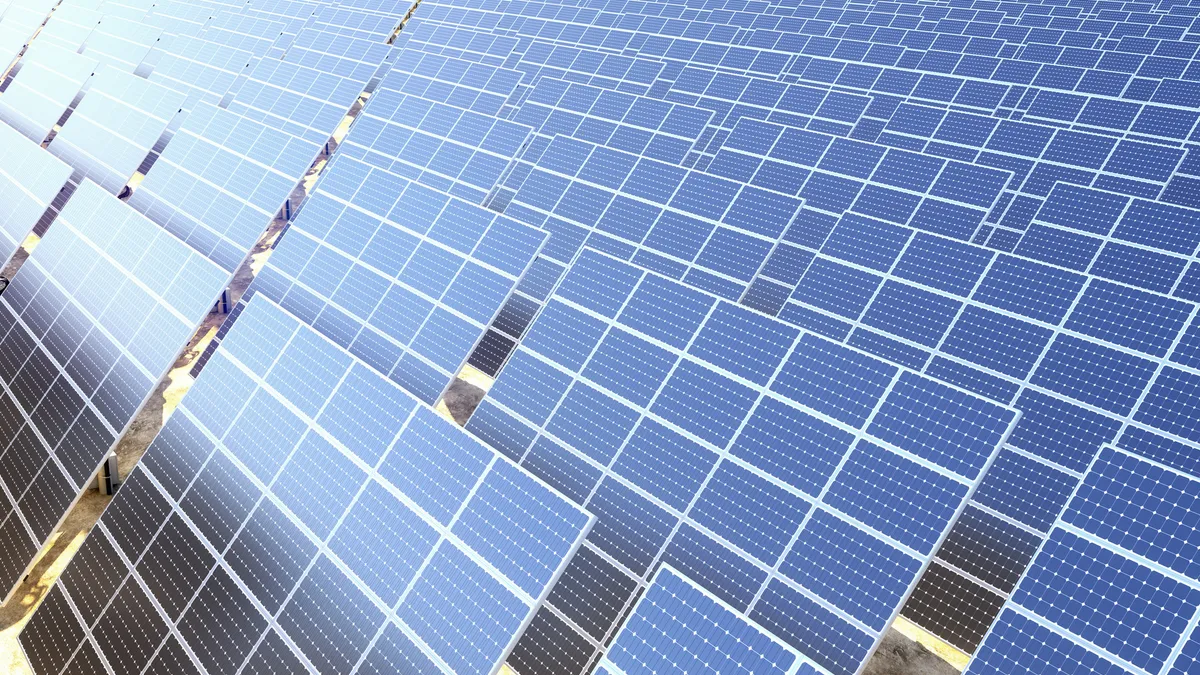Zoe Gossett is a program manager at the Climateworks Foundation and was a 2022 Clean Energy Leadership Institute fellow.
Renewables are not only revolutionizing the way we harness clean energy to bring power to communities, they’re also creating an ethos to leave behind an extractive mindset for a more regenerative and circular one.
The International Energy Agency points to solar as the “new king of the world’s electricity market” and in the past decade, the solar industry market has grown significantly. Driven by electricity demand and declining installation costs, solar is an attractive option for residential and commercial customers who want to feel good about reducing their carbon footprint while saving money in the long term.
The enduring power of solar to bring electricity to energy-scarce and under-resourced communities is a net positive for the climate and society. While there are significant global environmental and social incentives to using solar energy, its resource intensity calls into question whether solar is truly “green.” The bad news is it’s not — at least not yet.
The global energy transition has seen an increase in demand and extraction of raw materials, including some rare earth minerals, which are difficult to extract. The production of solar photovoltaic panels includes many components with minerals such as copper, nickel and aluminum (commonly used in lithium batteries), zinc, silver and silicon, and materials like glass, concrete and steel, all of which draw on a lot of energy from fossil fuels, and release CO2 during the combustion process. There are also many environmental and human impact concerns.
The mining and refining process has damaged surrounding communities and plants and wildlife, and if produced in high quantities, can release toxic pollutants, contaminating soil and water systems, and affecting local air quality. The mining industry is also tied to global human rights violations, with a history of exploiting child laborers in some countries and unfair and poor working conditions.
The average lifespan of solar PV panels and optimized power is around 25 to 30 years, but natural degradation will lead to the panels’ eventual retirement. While many solar panels have come online in the last decade, many early adopters and the industry will face a growing waste management issue in the decades ahead.
At the disposal stage, breaking down solar PV parts is harmful and poses environmental and human health risks to workers handling the waste and to the communities living near landfills. The United Nations Environment Programme reports that “less than 20% of e-waste is formally recycled, with the 80% either ending up in landfill or being informally recycled - much of it by hand in developing countries”, which also lack proper regulations and infrastructure to handle and dispose of these materials.
The reality is that the benefits of solar for people and the planet in the long term is also harming them in the short term. If solar is to be truly “green,” it needs to be circular. At every point of a solar PV panel’s lifecycle, consideration for human and environmental impact across the value chain is vital to both economic development and climate change.
Domestically and abroad, there are small signals pointing to the adoption of circular economy principles. In South Korea, Japan and India, rules and mandates for solar PV waste recycling are being introduced. In the U.S., the Solar Energy Technologies Office has developed a 5-year strategy “to establish safe, responsible and economic end-of-life practices” to develop the right economic incentives for reuse and disposal programs. Studies by the National Renewable Energy Laboratory are looking at how to manage and curtail future e-waste from retired or damaged solar PV panels by extending the lifetime of certain components and integrating closed-loop manufacturing processes to recover and reuse certain materials like glass, aluminum and silicon.
The passing of the Inflation Reduction Act offers the solar industry an opportunity to enter the circular economy by creating a more resilient and low-carbon supply chain by “greening” the system. It also tackles issues around improving the quality of solar PVs, reducing GHG emissions at the manufacturing stage, and responsible sourcing and procurement practices that ensure proper stewardship of resources and safeguard the health of communities. Additionally, non-governmental organizations like EarthJustice, are calling on policymakers to reform and update mining laws and regulations to be in line with current environmental standards and for mining companies to apply regenerative and circular practices that protect indigenous lands and tribal communities.
As countries begin to ramp up their solar capacity at the speed and scale required to match global climate commitments, a global push for application of circular economy principles needs to transpire to ensure the solar industry does not induce harmful practices that the fossil fuel industry has exacerbated for years. Such a transformative effort will require stakeholders across government, civil society and the private sector at both the national and transnational level to work together to revise operations, regulations, laws and standards that incorporate safeguards to the environment, communities and workers, while reducing global GHG emissions at both the extraction and disposal stages.
Everyone has a role to play in the race to mitigate climate change in creating economic and social incentives that move towards true sustainable solutions with zero harm to both people and the planet.





















